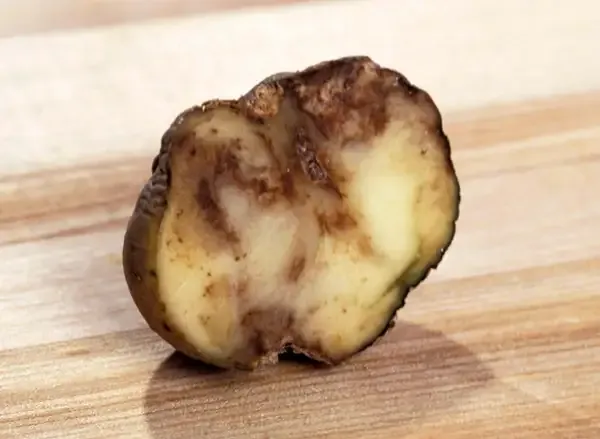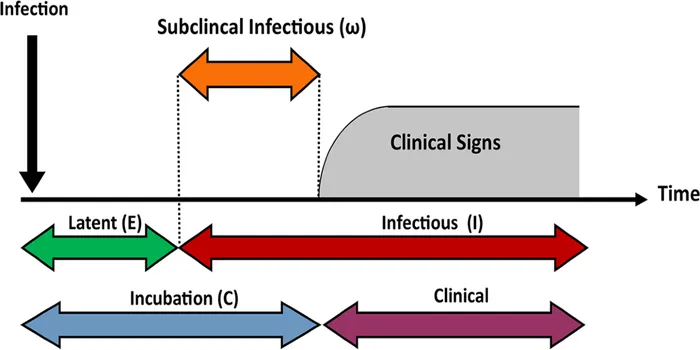The Mold that Wrecked Ireland
The Mold that Wrecked Ireland refers to the devastating potato blight that struck Ireland in the mid-19th century, leading to the Great Famine. This catastrophic event was caused by the fungus-like organism Phytophthora infestans, which destroyed potato crops, the staple food for a majority of the population. The resulting food shortage led to mass starvation, disease, and death, significantly reducing Ireland's population through both mortality and emigration, and leaving lasting social and economic impacts.

In the annals of agricultural history, few events have had as profound an impact as the Great Famine in Ireland, often referred to as the Irish Potato Famine. The primary culprit behind this catastrophic period was a devastating mold known as Phytophthora infestans, a pathogen that wreaked havoc on potato crops across the nation. Understanding the dynamics of this mold and its consequences can provide valuable insights into both historical agricultural practices and modern-day challenges in crop management.
The Science Behind Phytophthora Infestans
Phytophthora infestans is a water mold that thrives in moist conditions, making it particularly destructive to crops like potatoes. The organism causes late blight, a disease characterized by dark lesions on leaves and stems, leading to rapid decay of the plant. The mold reproduces both sexually and asexually, which allows it to adapt quickly to environmental changes and develop resistance to certain fungicides. This adaptability poses significant challenges for farmers, particularly in regions with similar climates to Ireland's.
Historical Context: The Irish Potato Famine
The Irish Potato Famine, occurring between 1845 and 1852, was marked by widespread crop failure due to Phytophthora infestans. At the time, the potato was a staple food for a large portion of the Irish population, making the impact of the mold even more catastrophic. Historical records indicate that up to one million people died from starvation and disease, while another million were forced to emigrate, resulting in a demographic shift that changed the face of Ireland forever.
The Economic Impact of the Famine
To fully grasp the scale of the disaster, it is essential to consider the economic ramifications. Below is a table that illustrates the decline in potato production and its correlation to population loss during the famine years:
| Year | Potato Production (in tons) | Population (in millions) |
|---|---|---|
| 1845 | 1,500,000 | 8.2 |
| 1846 | 1,200,000 | 8.0 |
| 1847 | 800,000 | 7.5 |
| 1848 | 600,000 | 7.0 |
| 1849 | 400,000 | 6.5 |
The decline in potato production was staggering, illustrating not just the immediate consequences of the mold but also the long-term effects on the Irish economy. The reliance on a single crop made the population particularly vulnerable to such agricultural disasters.
Modern-Day Lessons from Historical Events
The lessons learned from the devastation caused by Phytophthora infestans are critical for modern agriculture. Today, farmers employ various strategies to combat similar threats, including crop rotation, the use of resistant plant varieties, and integrated pest management techniques. Awareness of plant diseases and ongoing research into pathogens are crucial for preventing future agricultural crises.
Phytophthora Infestans Today
Even in contemporary agriculture, Phytophthora infestans remains a relevant threat. With the increase in global trade and climate change, the potential for outbreaks of late blight is heightened. Farmers and agricultural scientists continue to monitor the mold’s evolution and resistance patterns. The development of genetically modified organisms (GMOs) and biopesticides has provided new avenues for crop protection, but they come with their own sets of controversies and challenges.
Conclusion: The Ongoing Battle Against Mold
The story of the mold that wrecked Ireland serves as a powerful reminder of the delicate balance between agriculture and nature. While Phytophthora infestans had a catastrophic impact on Irish society in the 19th century, it has also led to advancements in agricultural practices and disease management that continue to benefit farmers worldwide. By understanding the past, we can better prepare for the future, ensuring that our agricultural systems are resilient and capable of withstanding the challenges posed by pathogens.
As we move forward, it is essential for farmers, researchers, and policymakers to collaborate in addressing the ongoing threats posed by molds and other pathogens. The lessons learned from the Irish Potato Famine should serve as a catalyst for innovation and prevention, safeguarding our food supply for generations to come.












